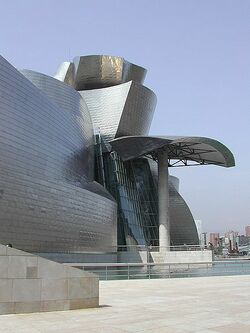Surface (geometry)
Jump to navigation
Jump to search
A surface in mathematics has many different uses, the most common referring to a two-dimensional submanifold of three-dimensional Euclidean space, .
Any set of points composed of pieces topologically equivalent to a subset of a plane is a surface: this includes curved surfaces such as a paraboloid, infinite surfaces such as a plane, surfaces of limited extent such as the interior of a polygon, and surfaces with strange topology such as an infinitely long row of squares each separated by some distance, or the set of all points with rational coordinates in a plane. The extremities of a solid are made up of surfaces.
A surface has length and breadth only. A surface that is flat is called a plane.

